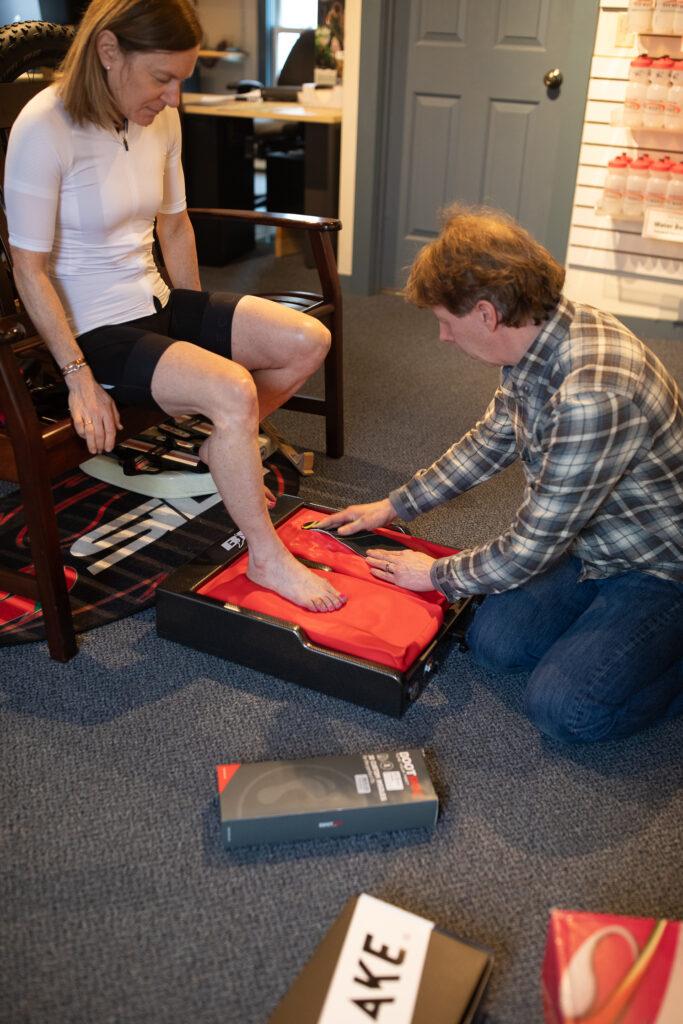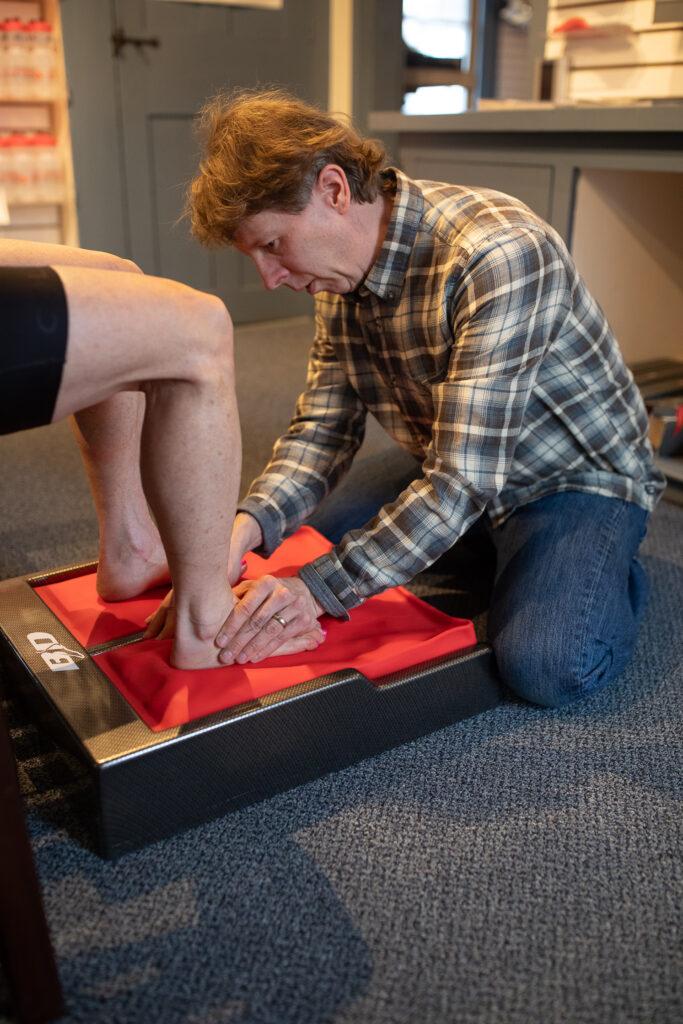Foot & leg alignment – The foundation of a good bike fit

A strong and durable bike fit, like a good building, should be built from the foundation up. Aligning the foot and making it a stable structure on the pedal is the cycling equivalent of pouring a good foundation. It is a very important first step towards achieving an efficient, powerful and durable cycling position. You have probably noticed (on yourself or others) that many rider’s knees either track towards the outside or inside at the top of the pedal stroke in a quick snap-like motion – they do not stay in-line.
This motion is often caused by a lack of alignment of the lower leg and foot. It compromises power, strength, endurance and even aerodynamics. The good news is that there are devices available that can accommodate for your individual alignment and bring your knee and leg into an aligned, safe, strong and more aerodynamic position. The human foot and ankle are designed for walking and running, not rigid shoe sports like cycling. Most people’s feet have built in shock absorption in the joints and soft tissue that allows them to absorb the impact of weighted motion.
This shock absorption characteristic is reflected as a rolling and collapsing of the foot inwards (pronation) or a rolling of the foot outwards (supination). As pronation or supination occur on a bicycle, your power is absorbed by the foot’s side-to-side motion instead of going directly to the pedal. Furthermore, especially in the case of over-pronation (the most common problem), you also place significant strain on the tendons, ligaments and joints of the entire body as they fight to hold you in alignment without proper support (yes, your feet can effect your shoulders…). Most people over-pronate or supinate (a 1988 study in The Journal of Orthopedic and Sports Physical Therapy showed the number at 95%). Luckily, technology has provided us with supportive devices in the form of custom footbeds and cant wedges.
How to get the best support
The foot consists of three separate, but related, zones: the heel, the arch and the forefoot. The ball of the foot acts as a hinge, connecting the arch and heel with the forefoot.
This hinge is great for helping us flex and push off during walking and running, but it also allows the foot to twist, which can throw off alignment and strength, while cycling. The goal is to stabilize and align all three elements with the skeletal system. A properly made custom cycling footbed does just this.
Custom Cycling Footbed Service
We were one of the very first locations in the country offering this important service and now offer over 20 years of experience fabricating custom footbeds for rigid footwear.
Foot stability is the foundation every good fit is built upon. Custom cycling footbeds help align your body, while evenly distributing pressure and supporting your foot. Notable power increases are common, along with increased comfort, endurance and reduced joint wear.
This service takes 1-2 hours (rider only needs to be present for 20 minutes).

